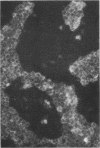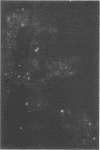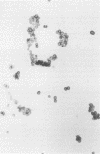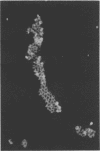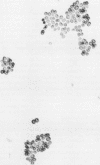Abstract
The presence of choriogonadotropin- and alpha-subunit-like materials in two species of bacteria identified as Staphylococcus simulans and Streptococcus faecalis have been demonstrated by the indirect fluorescein-labeled and the indirect peroxidase-labeled immunocytochemical techniques, utilizing antiserum for human choriogonadotropin, for its alpha and beta-subunits and the bera-subunit COOH-terminal peptide. The bacteria were originally isolated from the urine of two patients with advanced forms of cancer. Chromatography done on the water-soluble extract of acetone powder preparations of the bacterial cultures revealed the presence of a material similar to the complete trophoblastic hormone and to its beta-subunit in the culture media of S. simulans, and to the beta-subunit in the media of S. faecalis. No free alpha-subunit was detectable. Furthermore, the choriogonadotropin-like factor demonstrated biological activity in in vivo assay systems. From the present results, it can be concluded that some species of "cancer-associated" bacteria can synthesize a human trophoblastic hormone-like glycoprotein with physicochemical properties similar to those of the human trophoblastic hormone that is biologically active and that is either released complete or as one of its subunits in the culture media.
Full text
PDF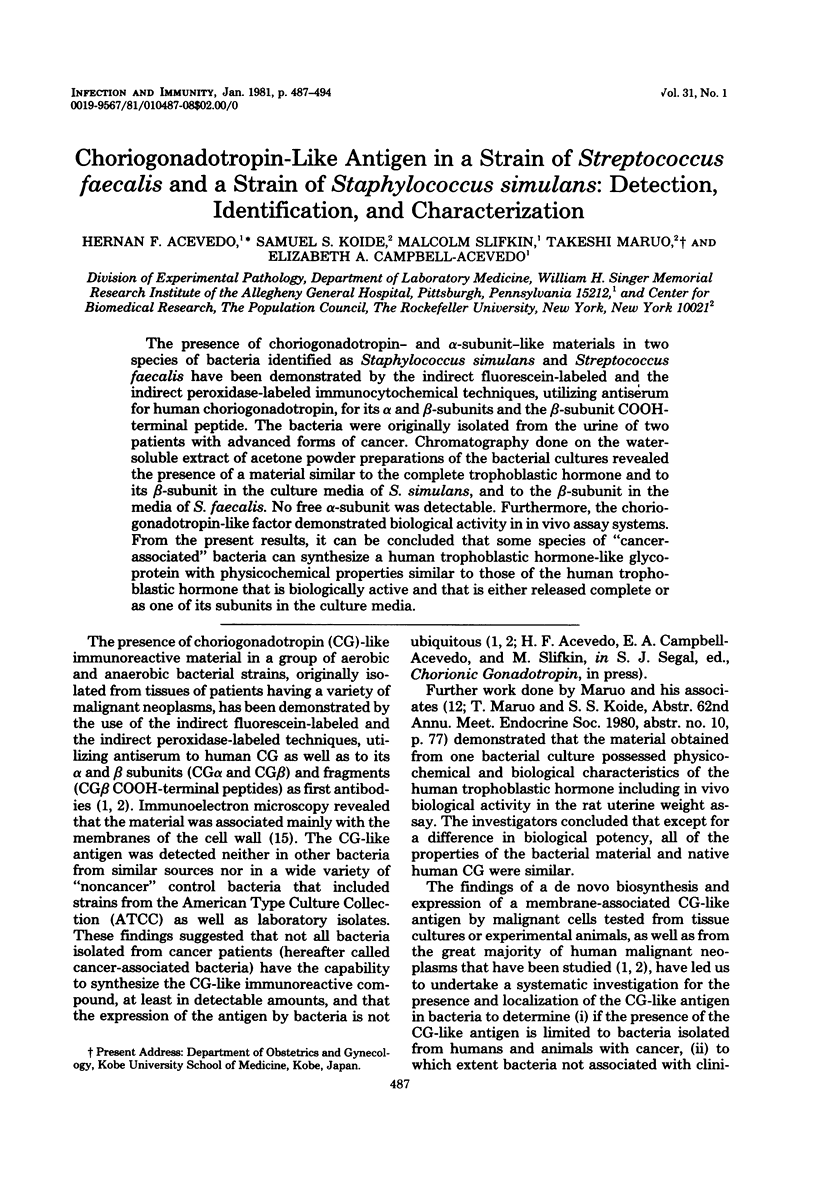
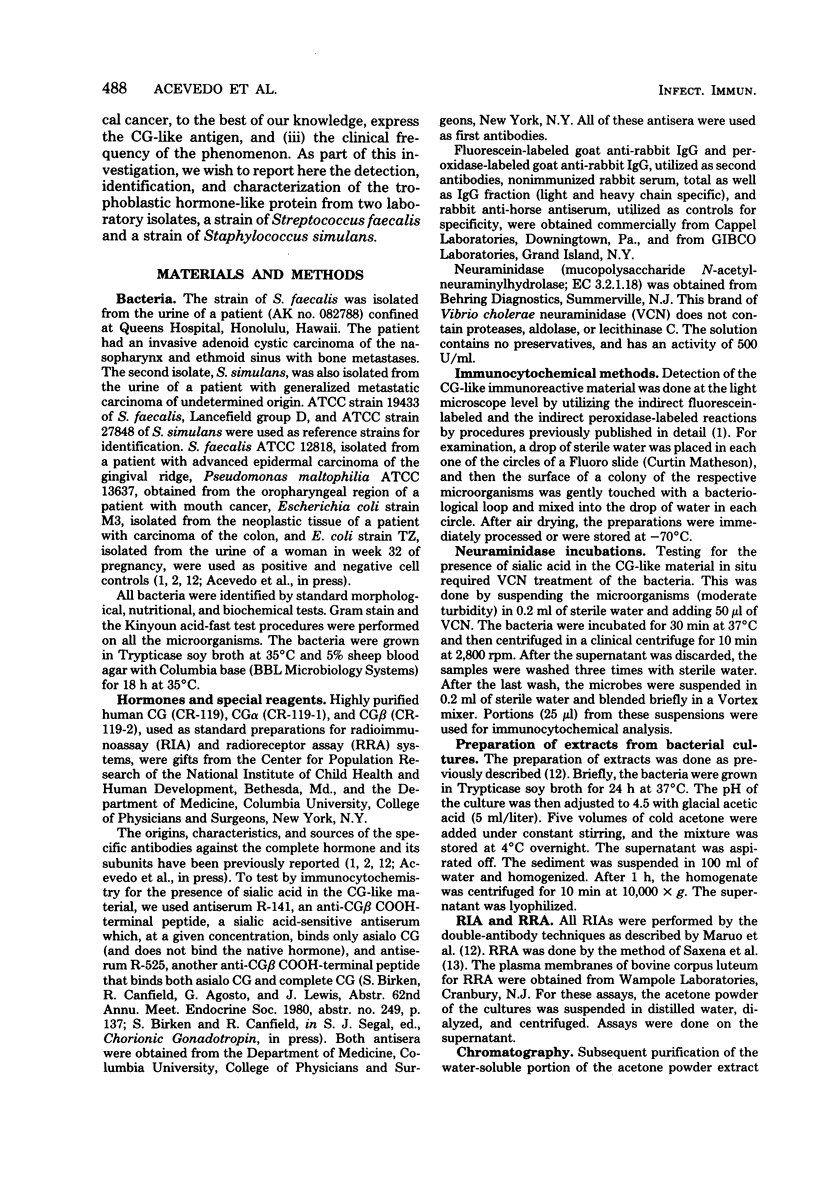
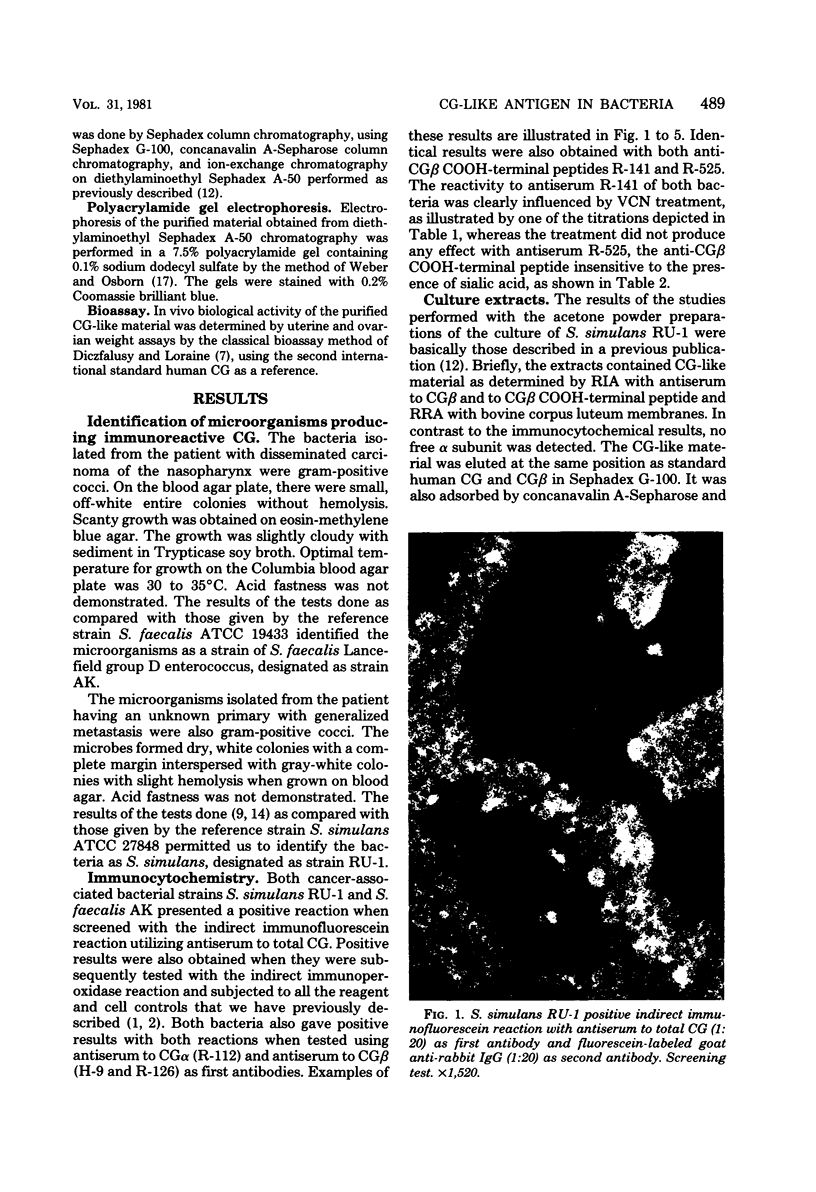
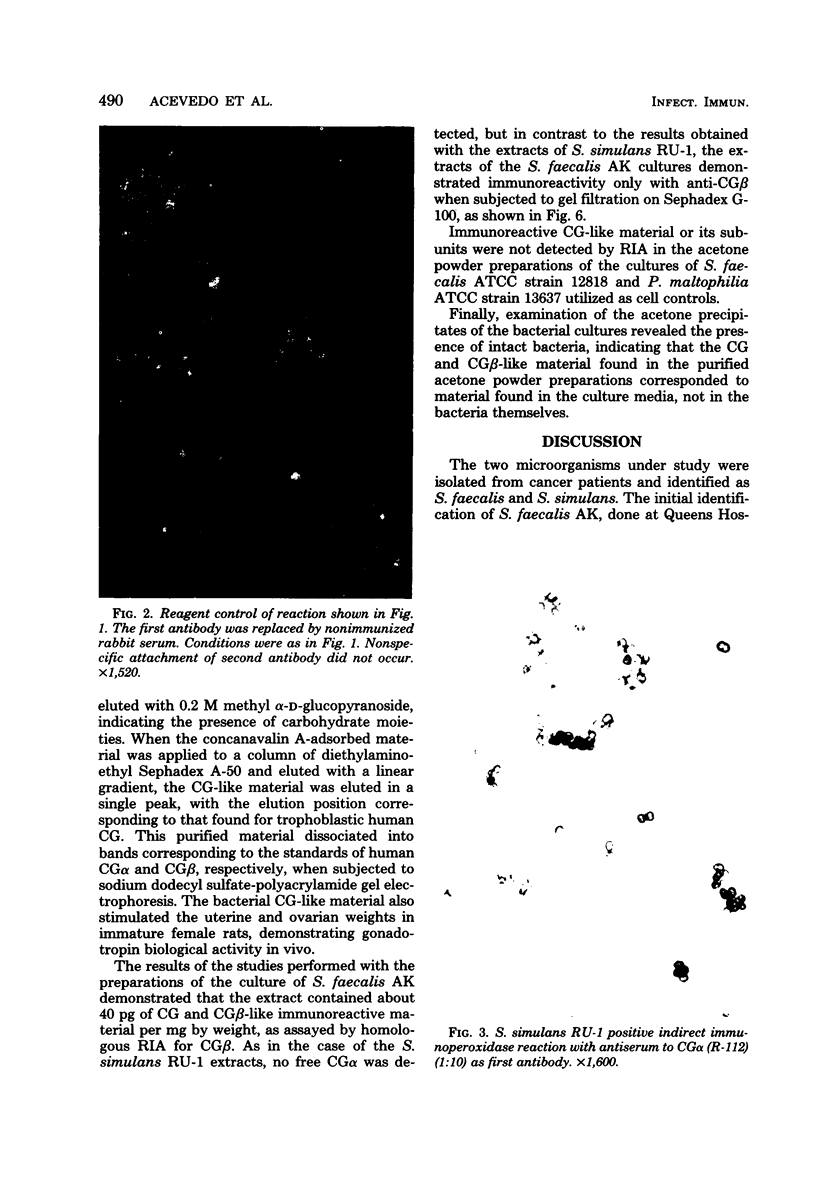
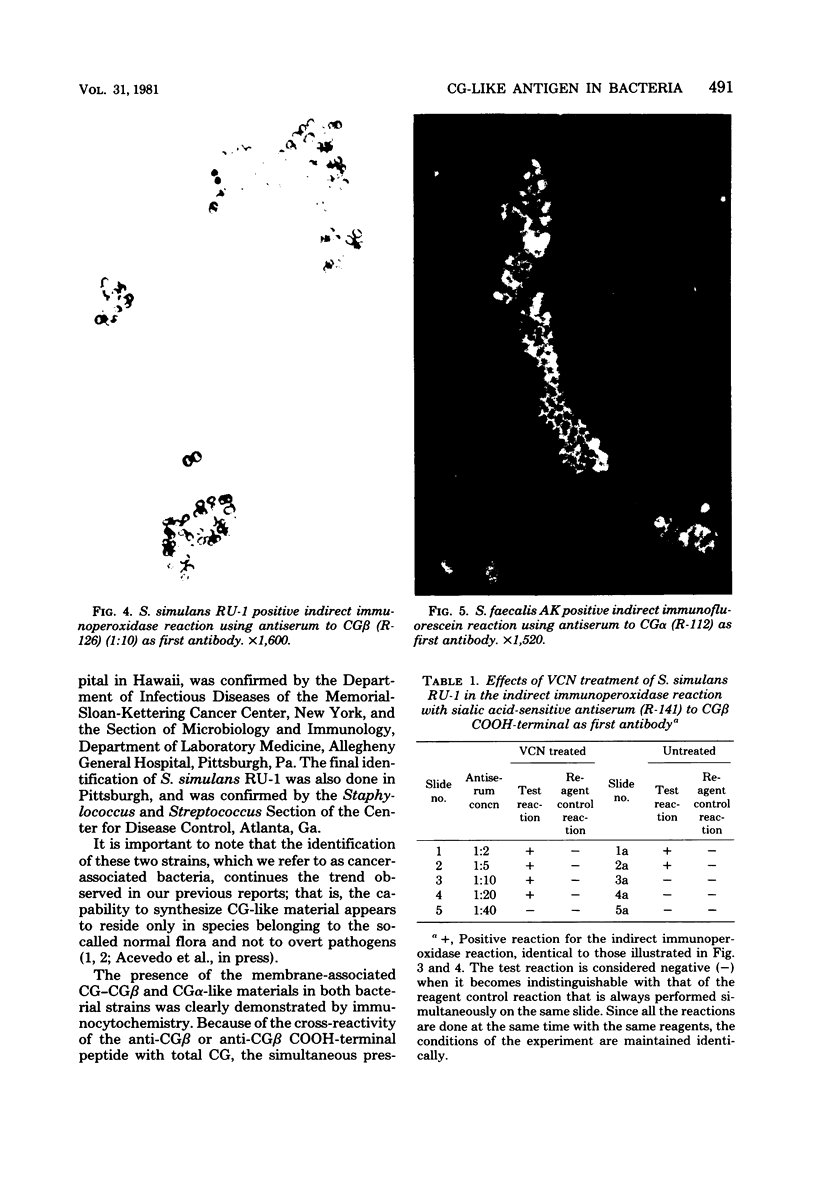
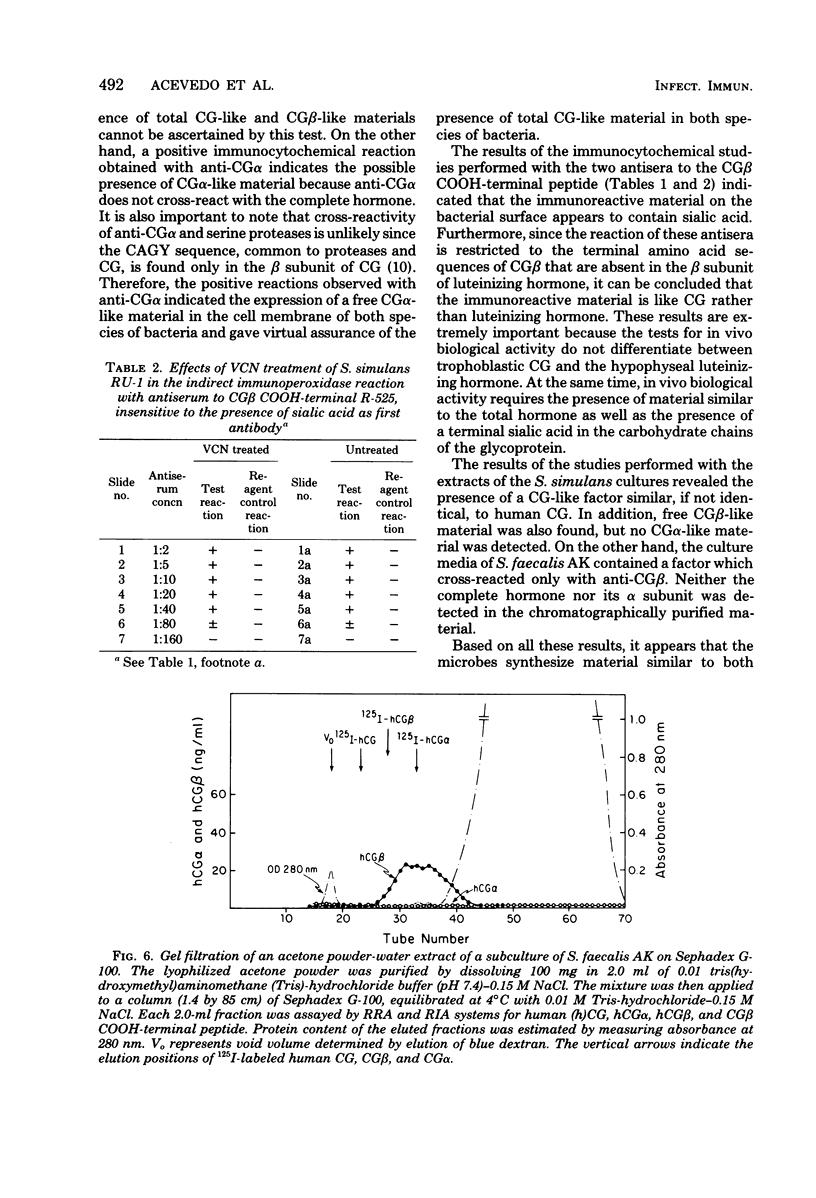
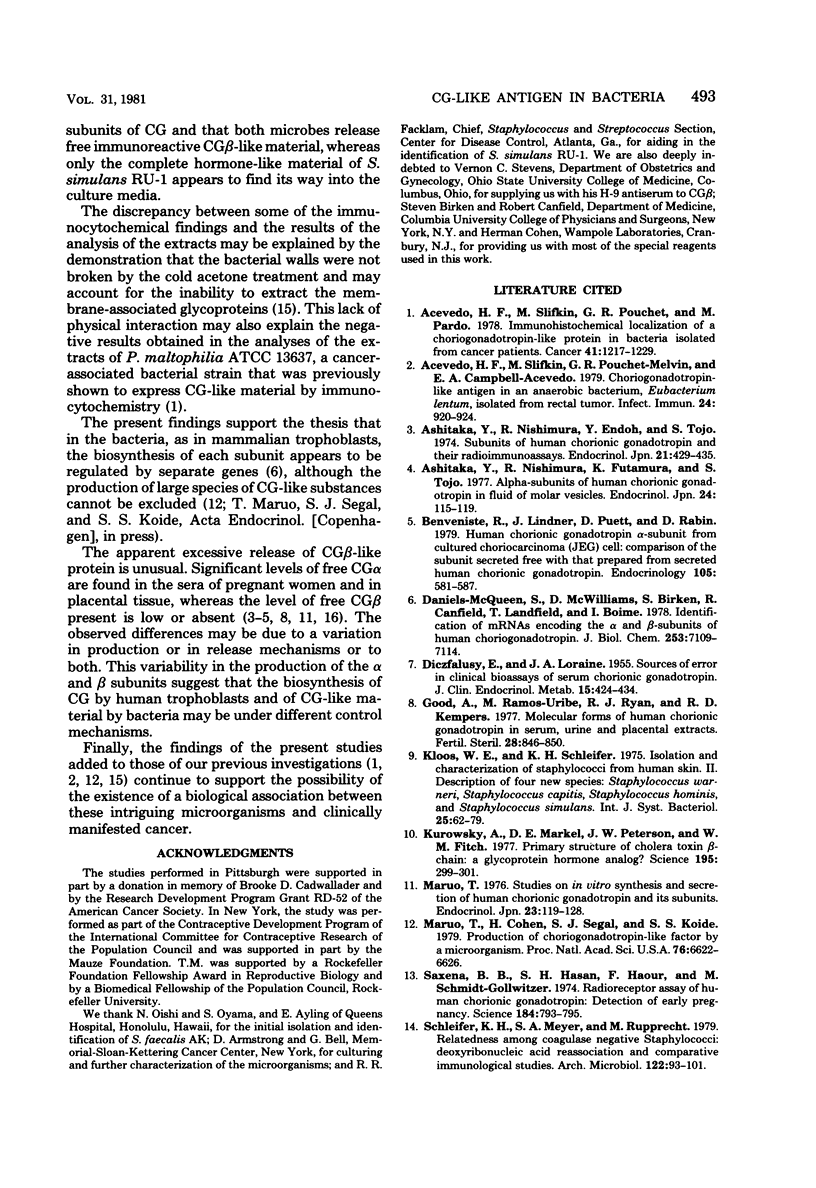
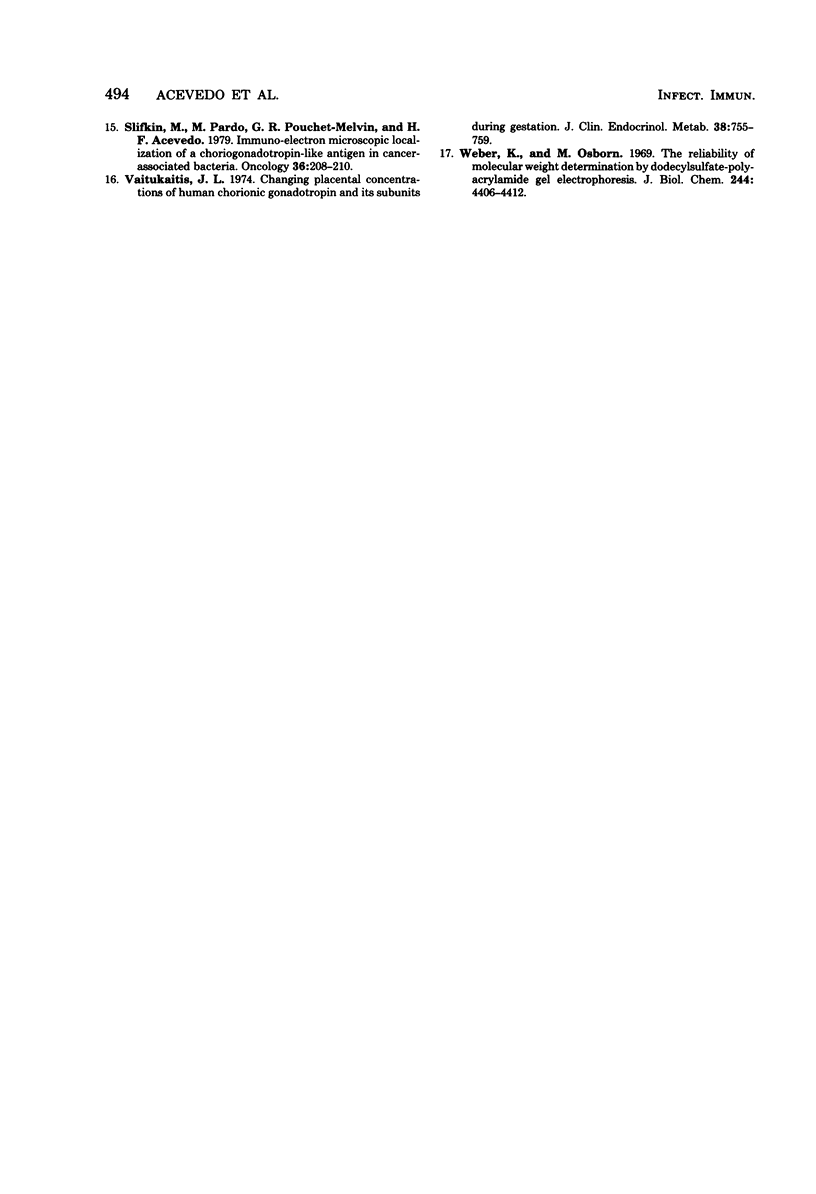
Images in this article
Selected References
These references are in PubMed. This may not be the complete list of references from this article.
- Acevedo H. F., Slifkin M., Pouchet-Melvin G. R., Campbell-Acevedo E. A. Choriogonadotropin-like antigen in an anaerobic bacterium, Eubacterium lentum, isolated from a rectal tumor. Infect Immun. 1979 Jun;24(3):920–924. doi: 10.1128/iai.24.3.920-924.1979. [DOI] [PMC free article] [PubMed] [Google Scholar]
- Acevedo H. F., Slifkin M., Pouchet G. R., Pardo M. Immunohistochemical localization of a choriogonadotropin-like protein in bacteria isolated from cancer patients. Cancer. 1978 Apr;41(4):1217–1229. doi: 10.1002/1097-0142(197804)41:4<1217::aid-cncr2820410401>3.0.co;2-a. [DOI] [PubMed] [Google Scholar]
- Ashitaka Y., Nishimura R., Endoh Y., Tojo S. Subunits of human chorionic gonadotropin and their radioimmunoassays. Endocrinol Jpn. 1974 Oct;21(5):429–435. doi: 10.1507/endocrj1954.21.429. [DOI] [PubMed] [Google Scholar]
- Ashitaka Y., Nishimura R., Futamura K., Tojo S. Alpha-subunit of human chorionic gonadotropin in fluid of molar vesicles. Endocrinol Jpn. 1977 Feb;24(1):115–119. doi: 10.1507/endocrj1954.24.115. [DOI] [PubMed] [Google Scholar]
- Benveniste R., Lindner J., Puett D., Rabin D. Human chorionic gonadotropin alpha-subunit from cultured choriocarcinoma (JEG) cells: comparison of the subunit secreted free with that prepared from secreted human chorionic gonadotropin. Endocrinology. 1979 Sep;105(3):581–587. doi: 10.1210/endo-105-3-581. [DOI] [PubMed] [Google Scholar]
- DICZFALUSY E., LORAINE J. A. Sources of error in clinical bioassays of serum chorionic gonadotropin. J Clin Endocrinol Metab. 1955 Apr;15(4):424–434. doi: 10.1210/jcem-15-4-424. [DOI] [PubMed] [Google Scholar]
- Daniels-McQueen S., McWillians D., Birken S., Canfield R., Landefeld T., Boime I. Identification of mRNAs encoding the alpha and beta subunits of human choriogonadotropin. J Biol Chem. 1978 Oct 10;253(19):7109–7114. [PubMed] [Google Scholar]
- Good A., Ramos-Uribe M., Ryan R. J., Kempers R. D. Molecular forms of human chorionic gonadotropin in serum, urine, and placental extracts. Fertil Steril. 1977 Aug;28(8):846–850. [PubMed] [Google Scholar]
- Kurosky A., Markel D. E., Peterson J. W., Fitch W. M. Primary structure of cholera toxin beta-chain: a glycoprotein hormone analog? Science. 1977 Jan 21;195(4275):299–301. doi: 10.1126/science.831277. [DOI] [PubMed] [Google Scholar]
- Maruo T., Cohen H., Segal S. J., Koide S. S. Production of choriogonadotropin-like factor by a microorganism. Proc Natl Acad Sci U S A. 1979 Dec;76(12):6622–6626. doi: 10.1073/pnas.76.12.6622. [DOI] [PMC free article] [PubMed] [Google Scholar]
- Maruo T. Studies on in vitro synthesis and secretion of human chorionic gonadtropin and its subunits. Endocrinol Jpn. 1976 Apr;23(2):119–128. doi: 10.1507/endocrj1954.23.119. [DOI] [PubMed] [Google Scholar]
- Saxena B. B., Hasan S. H., Haour F., Schmidt-Gollwitzer M. Radioreceptor assay of human chorionic gonadotropin: detection of early pregnancy. Science. 1974 May 17;184(4138):793–795. doi: 10.1126/science.184.4138.793. [DOI] [PubMed] [Google Scholar]
- Schleifer K. H., Meyer S. A., Rupprecht M. Relatedness among coagulase-negative staphylococci: deoxyribonucleic acid reassociation and comparative immunological studies. Arch Microbiol. 1979 Jul;122(1):93–101. doi: 10.1007/BF00408051. [DOI] [PubMed] [Google Scholar]
- Slifkin M., Pardo M., Pouchet-Melvin G. R., Acevedo H. F. Immuno-electron microscopic localization of a choriogonadotropin-like antigen in cancer-associated bacteria. Oncology. 1979;36(5):208–210. doi: 10.1159/000225343. [DOI] [PubMed] [Google Scholar]
- Vaitukaitis J. L. Changing placental concentrations of human chorionic gonadotropin and its subunits during gestation. J Clin Endocrinol Metab. 1974 May;38(5):755–760. doi: 10.1210/jcem-38-5-755. [DOI] [PubMed] [Google Scholar]
- Weber K., Osborn M. The reliability of molecular weight determinations by dodecyl sulfate-polyacrylamide gel electrophoresis. J Biol Chem. 1969 Aug 25;244(16):4406–4412. [PubMed] [Google Scholar]



